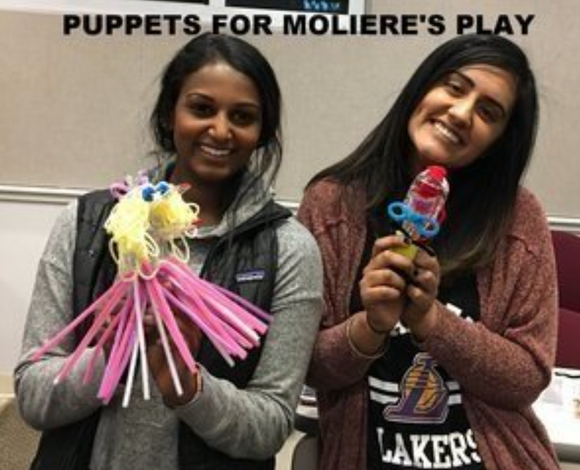
ART by NTM
Courses & Lectures


In science classes, students are taught that there has to be a right answer. In my Art & Medicine course, I teach that sometimes there are right answers, but often a situation is ambiguous. Art teaches us how to do more than just look. For medical practitioners, we must learn to see, observe, visualize, and heal. Coursework: I developed an accredited course on Art and Medicine for the Humanity Department of UMKC School of Medicine. This block course was 3 hours a day, Monday – Friday for a month. (This is an in-person class due to its many hands-on projects).
“Art and Medicine: Look, See, Visualize,” at the annual American Society of Bioethics and Humanities, September 2019, a two-hour per session course held weekly for one month, SPARK, KCMO, January 2022, Pittsburg, PA, and at the Second Annual Art and Medicine Conference of MSSU, October 2023.
The study of art and medicine requires evidence-based research to justify a formal course in medical school and academia, with the approval of the Curriculum Committee, following standards established by the American Association of Medical Colleges (AAMC). The AAMC supports and encourages humanities in medical education, as well as self-care to prevent burn-out and suicides, and professional development of empathy, compassion, and collaboration. They have recently published a monograph, The Fundamental Role of the Art and Humanities in Medical Education with references to evidence-based studies and practices of medicine and the arts. Please take a look at my workshops and lectures below. Contact me for more information or to schedule.
Guest lecturer at the University of Missouri at Kansas City School of Medicine, “Healing and Visual Art.” Winter 2002, 2002, 2003.
“Visualize Your Peaceful” is a presentation on using guided imagery as supplemental care for patients with chronic disease. It is given to healthcare providers.
“ART and Science Intertwined: My Journey as an Artist and Physician,” a lecture presented at UMKC-SOM (2022, 2023), Park College Art Department (October 2022), Envision personnel February 2024
Workshops: I have created a 4-hour workshop on “Creating Your Healing Vision with Silk Painting.” This has been given for cancer survivors, healthcare providers, and the public. Visit my workshop page.
Healing Arts: A Workshop for Medical Professionals & Students

ART and Science Intertwined. Explores the thinking of the artist and the scientist and their similarities. The evidence-based science of medicine cannot heal alone. Healing requires human interconnections. In ancient times, healers alleviated pain and suffering with herbs, magic, prayer, and rituals. Modern medicine is seen as a pill dispenser – a magic pill or injection that will instantly cure disease. It is the major cause of the opiate crisis, a “quick fix.” For a healer to heal, the same techniques of their ancient ancestors are needed: listen, touch, feel, observe and pray. This is learned through healing mentors, patient experience, and life experiences.
This is why I developed Healing Arts: Look, See, Observe, Visualize, to teach healthcare students the techniques that have been helpful for me in my life’s journey, both personally and professionally.
Medicine & Art Course: Drawing for Physicians

Art and Medicine: See, Look, Observe, Visualize. This teaches basic art skills that enhance observation skills. Keen observation is the most basic skill of a scientist, something they share with artists. Why not then return to drawing as a physician's skill? Art helps students explore personal ideation, thinking strategies, listening skills, practice sympathy with patient pain and trauma, study psyche and body connection through the lens of the student's professional persona, and through the lens of a suffering patient. Would you like your medical students to develop keen visual skills, professional practice visual thinking strategies, and increase their cross-discipline skills such as writing and observation? Then consider my Medicine and Art Course.
Students will
-
keep a daily journal
-
work in groups
-
explore personal ideation
-
thinking strategies
-
practice sympathy & listening skills
-
develop observation & visual skills
Enhancing Empathy: Teamwork for Medical Professionals

Taught over four sessions: This empathy class for medical professionals includes Soft Sculptural and Painting projects. Paired with literature and art history, each team explores three art projects in order to dialogue in both kinetic, visual, and auditory aspects. Through hands-on painting, sculpture, and textile design as a team, students will explore empathy through humor, memory work, and character study.
-
psychology of color & archetypes
-
teamwork strategies
-
visual studies through humor and memory
-
practice empathic listening
-
develop observation & visual skills


Medical Student
I so enjoyed this course and appreciate our school’s commitment to keeping humanities in our curriculum...Dr. TM's spunk & spirit are contagious. I wish all students could take this course!”

Medical Student
How can it be my last journal entry for our course? The past four weeks have flown by! My journal absolutely made me more self-aware and observant.

Medical Student
Wow. I really got into my head. It was really good to write things down. And I’m so different now than at the beginning of the course. I learned a lot about myself.














